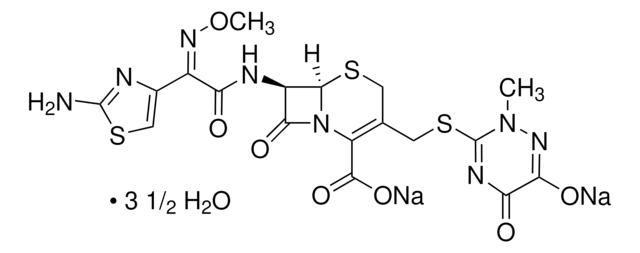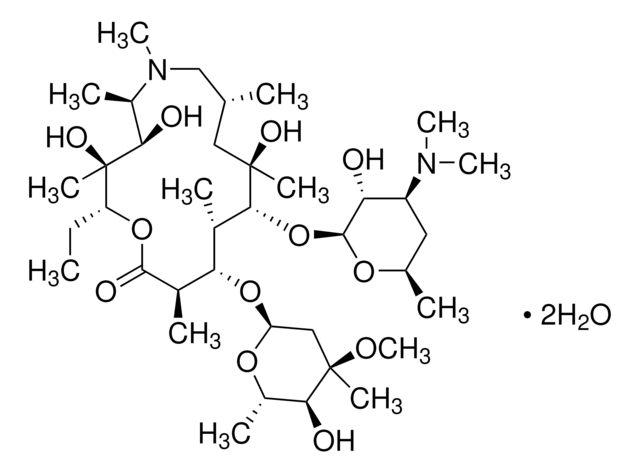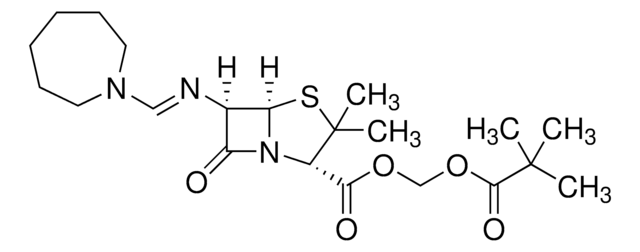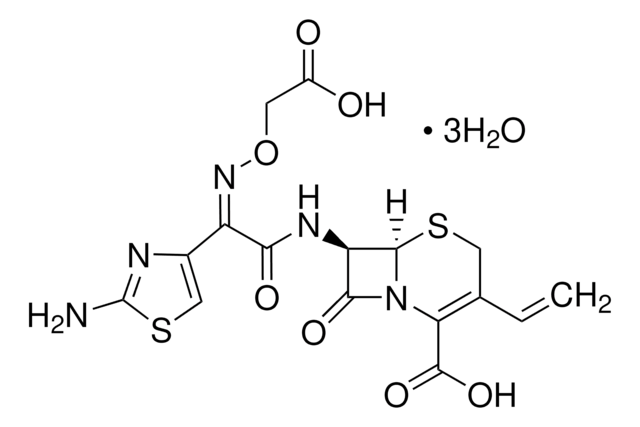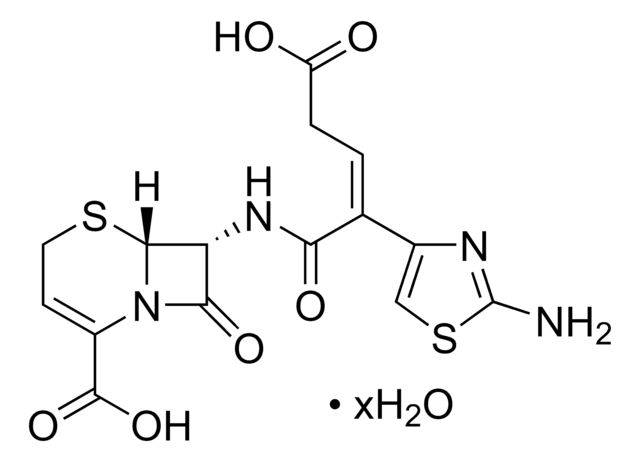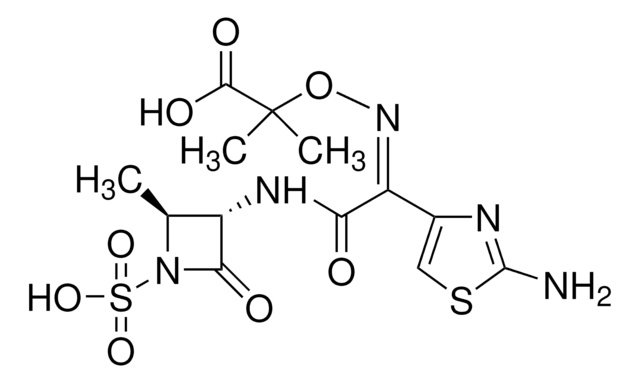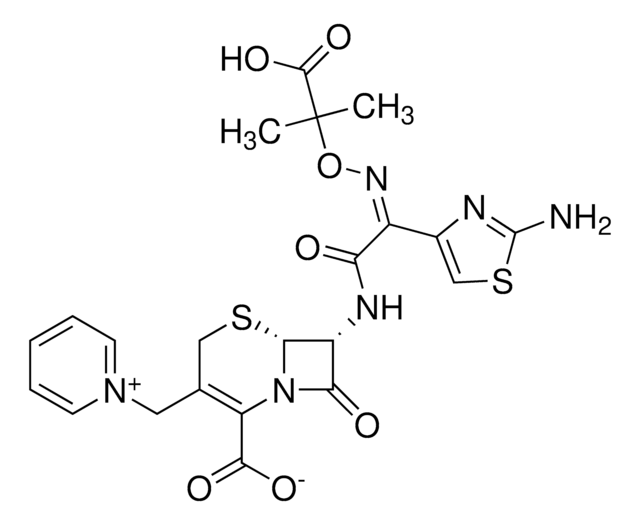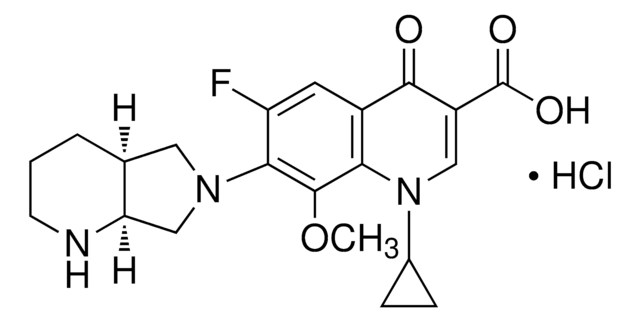32344
Cefpodoxime
VETRANAL®, analytical standard
別名:
(6R,7R)-7-{2-(2-Amino-4-thiazolyl)-2-[(Z)-methoxyimino]acetamido}-3-(methoxymethyl)-3-cephem-4-carboxylate, Cefpodoxime free acid
About This Item
おすすめの製品
グレード
analytical standard
品質水準
製品種目
VETRANAL®
テクニック
HPLC: suitable
gas chromatography (GC): suitable
アプリケーション
forensics and toxicology
veterinary
フォーマット
neat
保管温度
−20°C
SMILES記法
O=C(/C(C1=CSC(N)=N1)=N\OC)N[C@H](C2=O)[C@]3([H])N2C(C(O)=O)=C(COC)CS3
InChI
1S/C15H17N5O6S2/c1-25-3-6-4-27-13-9(12(22)20(13)10(6)14(23)24)18-11(21)8(19-26-2)7-5-28-15(16)17-7/h5,9,13H,3-4H2,1-2H3,(H2,16,17)(H,18,21)(H,23,24)/b19-8-/t9-,13-/m1/s1
InChI Key
WYUSVOMTXWRGEK-HBWVYFAYSA-N
アプリケーション
法的情報
シグナルワード
Danger
危険有害性情報
危険有害性の分類
Resp. Sens. 1 - Skin Sens. 1
保管分類コード
11 - Combustible Solids
WGK
WGK 3
引火点(°F)
Not applicable
引火点(℃)
Not applicable
適用法令
試験研究用途を考慮した関連法令を主に挙げております。化学物質以外については、一部の情報のみ提供しています。 製品を安全かつ合法的に使用することは、使用者の義務です。最新情報により修正される場合があります。WEBの反映には時間を要することがあるため、適宜SDSをご参照ください。
Jan Code
32344-BULK:
32344-25MG:
32344-VAR:
この製品を見ている人はこちらもチェック
ライフサイエンス、有機合成、材料科学、クロマトグラフィー、分析など、あらゆる分野の研究に経験のあるメンバーがおります。.
製品に関するお問い合わせはこちら(テクニカルサービス)